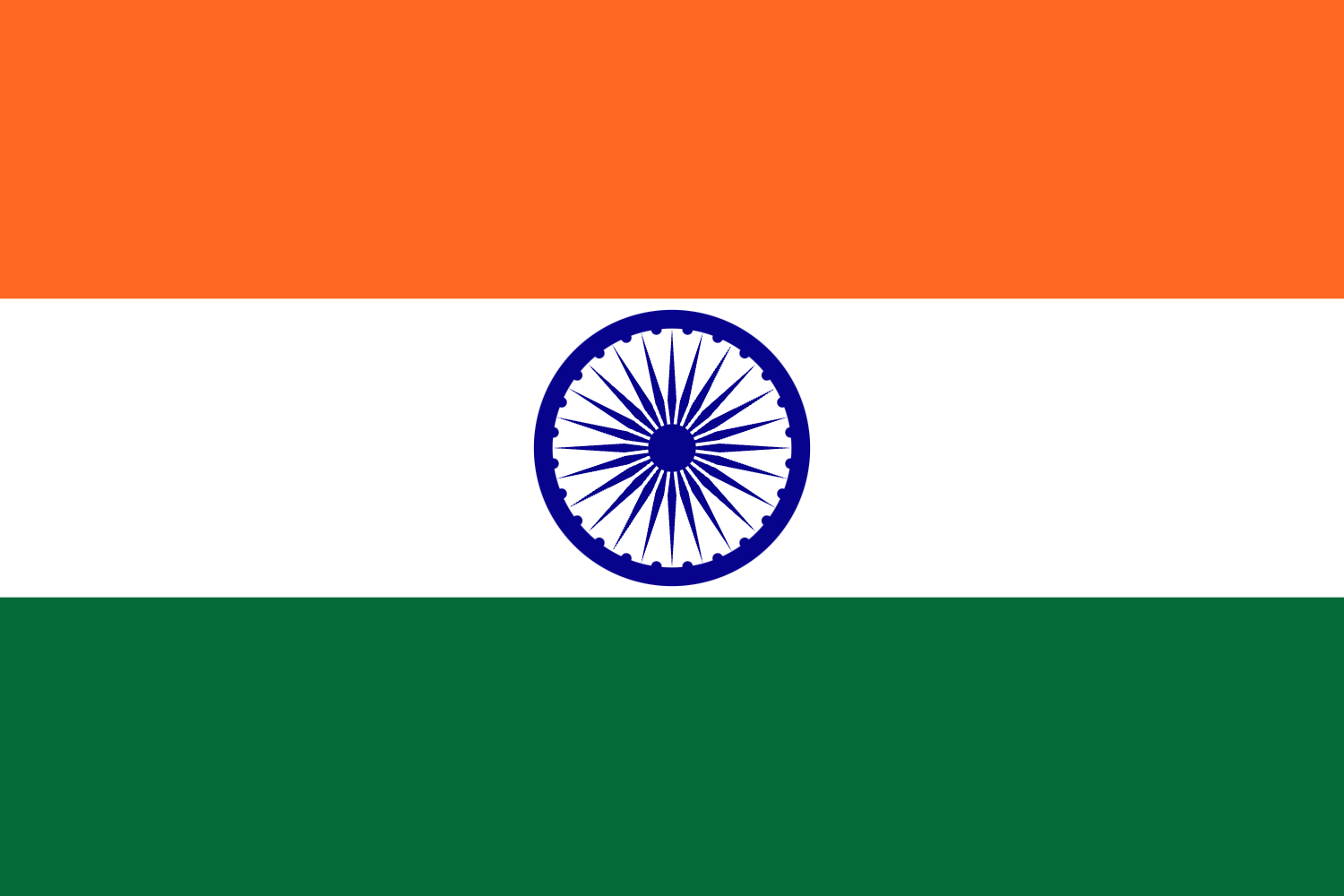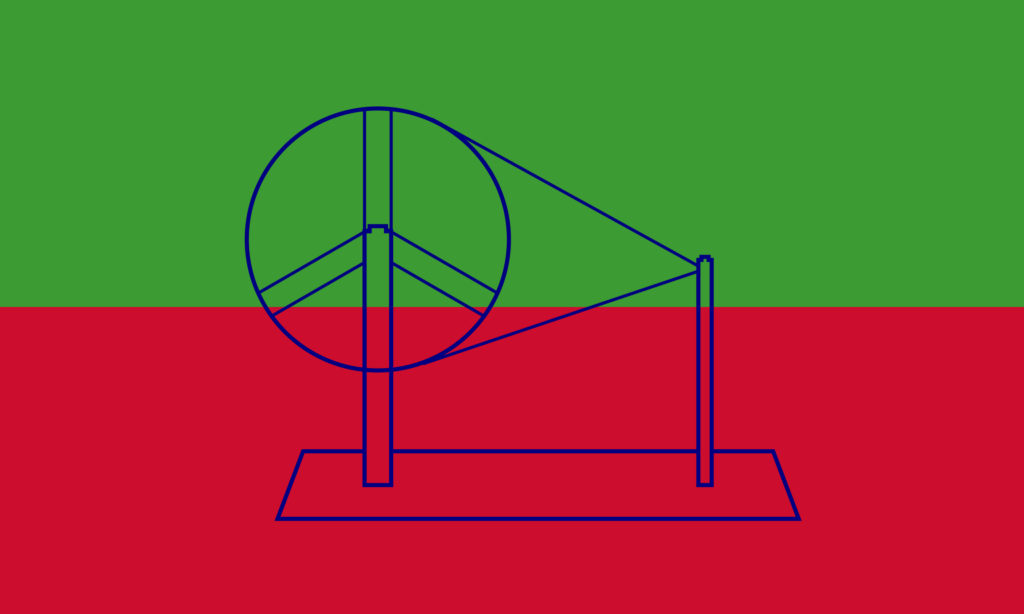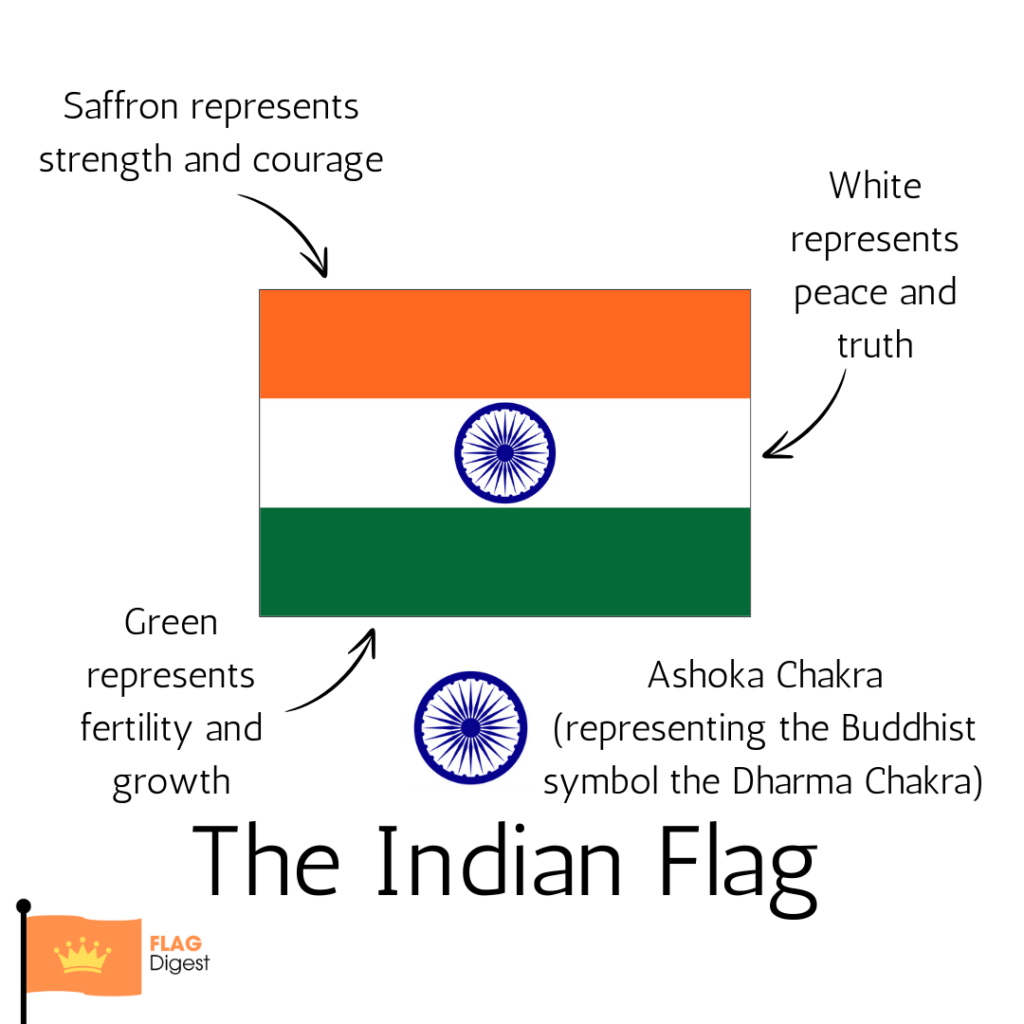On August 15th, 1947, the South Asian country of India gained independence from the United Kingdom. The final version of the flag, which has since remained unchanged, was adopted a few days earlier. Here we break down its symbolism and how it was designed.

Although the original design features the colors saffron, white, and green, the original design proposed by Gandhi only featured green and red. Green was intended to stand for Muslims and red was intended to stand for Hindus. The design also featured a spinning wheel, representing Gandhi’s goal of making Indians self-reliant, which in this case meant making their own clothing:

The flag was later changed to add a white stripe for the religious minorities in the country, as well as to symbolize peace between Muslims and Hindus. However, the colors were later given non-religious meaning, and the red color was replaced with saffron.
The spinning wheel was then replaced with the Ashoka Chakra, which represents a symbol common in Buddhism, known as the Dharma Chakra, which can have various meanings.
According to the Indian Government, the colors have meaning as follows:
- Saffron (top): Strength and courage
- White, with the Ashoka Chakra (middle): Peace and truth
- Green (bottom): Fertility and growth
Here’s a diagram that sums up the design of the flag:

The design of this flag, for the world’s most populous nation (depending on how you count!), is striking and is a fixture of Indian culture!
Leave a Reply